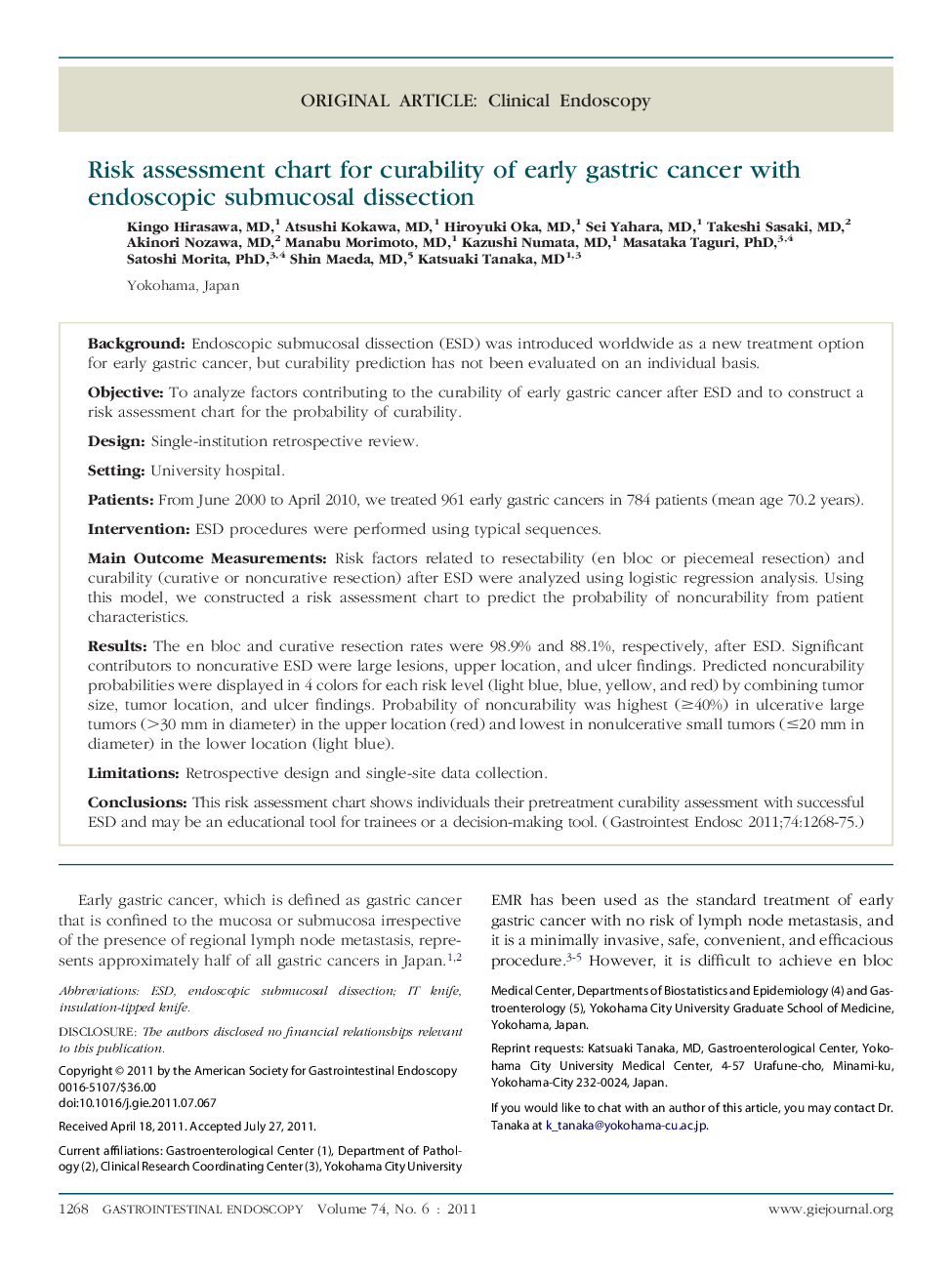| Article ID | Journal | Published Year | Pages | File Type |
|---|---|---|---|---|
| 3305054 | Gastrointestinal Endoscopy | 2011 | 8 Pages |
BackgroundEndoscopic submucosal dissection (ESD) was introduced worldwide as a new treatment option for early gastric cancer, but curability prediction has not been evaluated on an individual basis.ObjectiveTo analyze factors contributing to the curability of early gastric cancer after ESD and to construct a risk assessment chart for the probability of curability.DesignSingle-institution retrospective review.SettingUniversity hospital.PatientsFrom June 2000 to April 2010, we treated 961 early gastric cancers in 784 patients (mean age 70.2 years).InterventionESD procedures were performed using typical sequences.Main Outcome MeasurementsRisk factors related to resectability (en bloc or piecemeal resection) and curability (curative or noncurative resection) after ESD were analyzed using logistic regression analysis. Using this model, we constructed a risk assessment chart to predict the probability of noncurability from patient characteristics.ResultsThe en bloc and curative resection rates were 98.9% and 88.1%, respectively, after ESD. Significant contributors to noncurative ESD were large lesions, upper location, and ulcer findings. Predicted noncurability probabilities were displayed in 4 colors for each risk level (light blue, blue, yellow, and red) by combining tumor size, tumor location, and ulcer findings. Probability of noncurability was highest (≥40%) in ulcerative large tumors (>30 mm in diameter) in the upper location (red) and lowest in nonulcerative small tumors (≤20 mm in diameter) in the lower location (light blue).LimitationsRetrospective design and single-site data collection.ConclusionsThis risk assessment chart shows individuals their pretreatment curability assessment with successful ESD and may be an educational tool for trainees or a decision-making tool.
